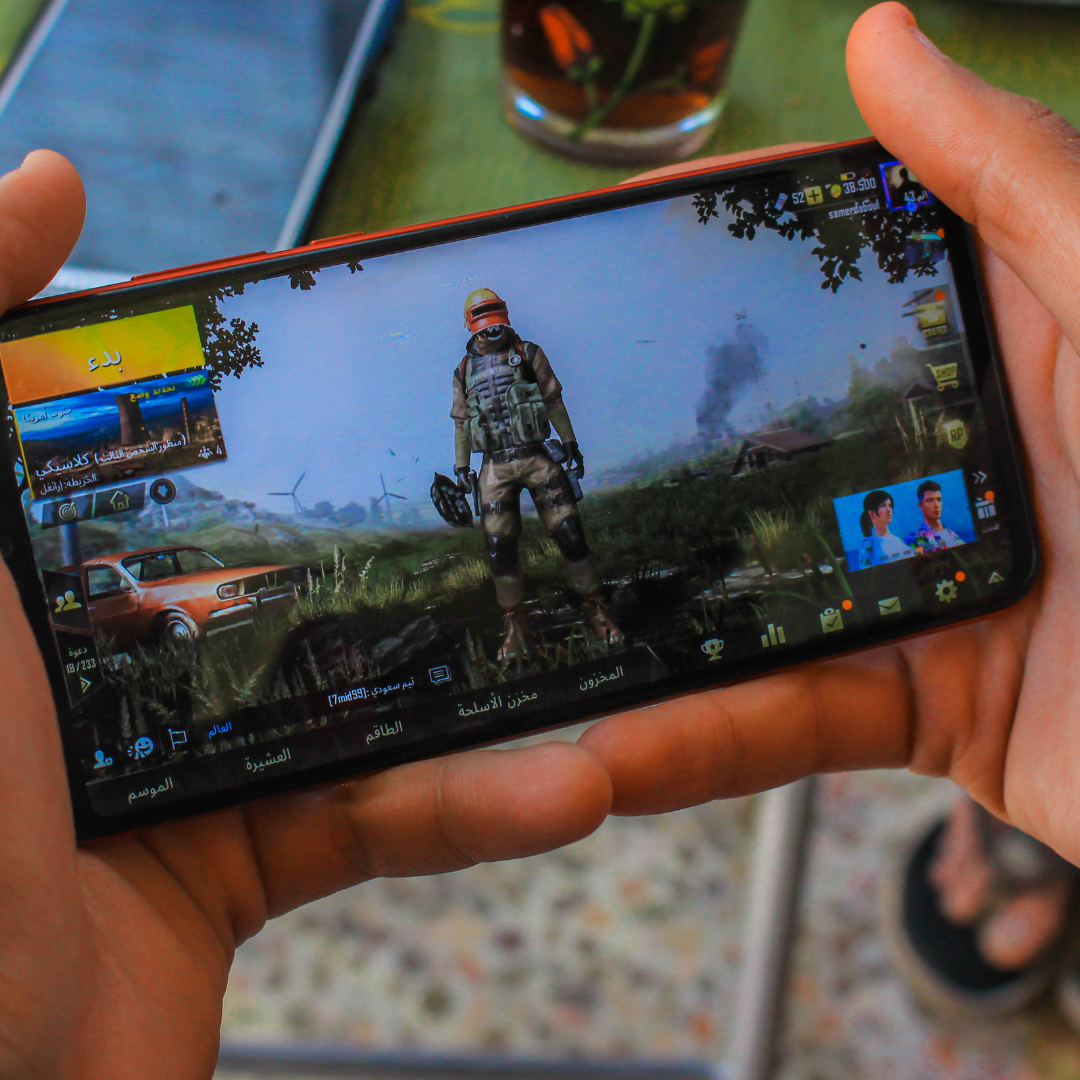Multiplayer gaming has undergone significant transformation since its inception, shaping the way players engage with one another. From local multiplayer experiences in arcade games to vast online networks, the landscape has evolved dramatically, influenced by advancements in technology and changing player expectations. The progression from simple local setups to elaborate global communities illustrates how social interaction and competition have driven the evolution of multiplayer gaming.
Early multiplayer games allowed for face-to-face competition, fostering friendships and rivalries in a local setting. As internet connectivity became more prevalent, gamers found themselves able to connect with others around the world, creating a shift towards a more expansive and diverse multiplayer experience. This transition not only expanded game design possibilities but also fundamentally altered how players form connections and communities within gaming.
The introduction of online platforms and virtual worlds has redefined multiplayer gaming further, leading to the emergence of massive player bases and new genres. Today’s gaming landscape is characterized by the social aspects of multiplayer experiences, reflecting a communal enjoyment that emphasizes collaboration and competition alike. As this evolution continues, it remains essential to examine the interplay between technology, community, and game design in shaping the future of multiplayer gaming.
Early Beginnings of Multiplayer Gaming
The early days of multiplayer gaming laid the foundation for the connected experiences enjoyed today. Through local networks and the advent of dial-up connections, gamers established methods to engage with each other in competitive and cooperative settings.
Network Play and LAN Parties
Local Area Networks (LANs) gained prominence in the 1990s, allowing players to connect multiple computers within a limited area. This setup enabled friends to play games together, often leading to dedicated gaming parties.
Titles like Doom and Warcraft II popularised LAN play, where players set up their machines in a single location. This close-knit environment enhanced social interaction and competition. Gamers utilized Ethernet cables and hubs to connect their systems, creating a shared gaming atmosphere.
Dial-Up and Early Online Games
Dial-up connections emerged in the mid-1990s, allowing players to connect to the internet for online gaming. This technology brought significant changes, enabling wider access to multiplayer experiences beyond physical proximity.
Games such as Meridian 59 and Ultima Online introduced players to vast virtual worlds. They could interact with others from remote locations, significantly expanding the gaming community. Despite slow connection speeds and frequent disconnections, these early online games paved the way for future online multiplayer developments.
Rise of Massively Multiplayer Online Games
Massively Multiplayer Online Games (MMOs) introduced a transformative approach to gaming, enabling large numbers of players to interact in persistent virtual worlds. Their rise significantly reshaped not only game design but also the social dynamics of gaming communities.
The advent of MMOs and MMORPGs
The late 1990s saw the emergence of MMOs, a genre that facilitated large-scale multiplayer gameplay. Games like “Meridian 59” and “Ultima Online” established foundational elements. These included immersive worlds, character customization, and real-time interactions.
The launch of “World of Warcraft” in 2004 marked a pivotal moment. With millions of subscribers, it set industry standards for gameplay mechanics, storytelling, and community engagement. Players could undertake quests, join guilds, and participate in large-scale events, all within a seamless online environment.
This era witnessed a blend of role-playing and strategy, expanding the gaming audience dramatically. Players no longer just sought personal achievements; they aimed to forge connections and collaborate with others in their adventures.
Impact on Gaming Culture
MMOs reshaped gaming culture by fostering online communities that extended beyond the game itself. Players formed friendships, collaborated on strategies, and participated in forums, creating a vibrant social layer around gaming.
The concept of the “guild” became central, offering players a sense of belonging and teamwork. Many online friendships evolved into real-life relationships, affecting players’ social lives significantly. Moreover, MMOs influenced the economy of gaming, leading to in-game currencies and trade systems that mirrored real-world economics. Events and competitions within these games promoted a sense of achievement, driving player engagement and loyalty. As a result, MMOs have established a lasting impact on how individuals perceive and engage with games and each other.
Evolution of Online Platforms
The evolution of online gaming platforms has greatly transformed the multiplayer gaming experience. Key developments in gaming services and social integration have significantly enhanced player interactions and gaming diversity.
Development of Gaming Services
The advent of dedicated gaming services changed how players connect and engage. Early platforms relied on local area networks (LANs) for multiplayer games, but the introduction of dial-up and broadband internet paved the way for online connectivity.
Services like Xbox Live and PlayStation Network emerged, offering seamless online multiplayer experiences. They provided infrastructure for matchmaking, voice chat, and downloadable content. Subscription models became prevalent, ensuring a stable revenue stream for developers while fostering consistent updates and enhancements.
As cloud gaming grew, platforms like Google Stadia and NVIDIA GeForce Now have allowed players to access high-quality games without high-end hardware, further expanding the audience and accessibility of online gaming.
Integration of Social Features
Social features have become essential in online gaming platforms. Integration of friend lists, messaging, and shared game experiences allows players to form communities and build connections. Games like Fortnite and Among Us thrive on social interaction, making it easier for players to invite friends and join parties. The implementation of streaming services directly into platforms has also enabled live broadcasting, allowing users to showcase their gameplay and engage with wider audiences.
Additionally, platforms now include social media integration, enabling quick sharing of achievements and gameplay moments. This connectivity enriches the gaming experience, making multiplayer environments more vibrant and interactive.
Impact of Broadband and Cloud Services
The advent of broadband and cloud technologies has significantly transformed multiplayer gaming. Increased internet speeds and cloud-based platforms have expanded accessibility and enhanced user experience, allowing gamers to connect and play with others across the globe seamlessly.
High-Speed Internet and Accessibility
The introduction of high-speed Internet has revolutionized how players engage in multiplayer gaming. Faster connections have reduced latency, enabling smoother gameplay and real-time interactions. With greater bandwidth, players can participate in large-scale online games without interruptions. This accessibility extends to a broader demographic, allowing more individuals to join multiplayer experiences, whether on consoles or PCs.
The availability of broadband Internet has also facilitated the rise of online communities. Gamers can form friendships, join clans, and take part in competitive matches, enriching the gaming landscape.
Cloud Gaming and Game Streaming
Cloud gaming services have emerged as a game-changer in the multiplayer arena. These platforms allow users to stream games without needing high-end hardware, eliminating barriers to entry. Through cloud services, players can access a vast library of games instantly. This immediacy fosters a more dynamic gaming environment where players can experiment with various titles without committing to purchases.
Additionally, game streaming enhances social interaction. Friends can easily join sessions from different devices, cultivating a more collaborative and engaging multiplayer experience. The flexibility and convenience provided by cloud gaming continue to shape the multiplayer gaming landscape.
Advancements in Multiplayer Technology
Recent advancements in multiplayer technology have significantly transformed how players interact in gaming. The evolution of cross-platform play and improved real-time interaction systems have redefined the multiplayer experience.
Cross-Platform Play
Cross-platform play enables users on different gaming systems to play together seamlessly. This advancement has expanded player bases and encouraged inclusivity among various gaming communities.
Key benefits include:
- Increased Player Engagement: By connecting users across platforms, games witness higher activity levels.
- Longevity of Games: A broader player pool contributes to longer-lasting gaming communities.
- Competitive Balance: Developers can balance experiences across platforms, enhancing fairness.
Games like Fortnite and Rocket League exemplify successful cross-platform implementations. They allow diverse player interactions, breaking down previous barriers tied to hardware limitations.
Real-Time Interaction and Synchronisation
Real-time interaction technology has seen remarkable improvements, enhancing fluidity in gameplay. Low latency connections are crucial for delivering responsive experiences, ensuring that actions occur simultaneously for all players.
Key features include:
- Dedicated Servers: These reduce lag and improve synchronization across various locations.
- Cloud Gaming: This technology enables players to access games without heavy local hardware, fostering accessibility.
- Peer-to-Peer Networks: These can also provide rapid connections, facilitating quick interactions among users.
Games that rely on real-time synchronization, such as Call of Duty and World of Warcraft, show how these advancements affect performance and immersion, offering smoother gameplay experiences.
Esports and Competitive Gaming
The landscape of gaming has shifted significantly with the advent of esports and competitive gaming. These developments not only changed player interactions but also influenced how games are designed and marketed.
Rise of Professional Gaming
The rise of professional gaming can be traced back to early tournaments, but it gained momentum in the 2000s with the establishment of leagues such as Major League Gaming (MLG). This period saw the transition from casual gaming to a robust industry where players compete for substantial prize pools.
Major games like League of Legends and Dota 2 propelled esports into the spotlight, drawing millions of viewers. Events such as The International have become almost festival-like, showcasing player skill and strategy. Teams often attract sponsorships, creating a professional ecosystem around gaming.
Influence on Game Design
The growth of competitive gaming has directly impacted game design. Developers now often include features that promote competitive play, such as ranked modes and spectator options. These elements enhance player engagement and encourage a strategic mindset.
Games are designed with balance in mind, aiming to create fairness across matches. Titles like Counter-Strike: Global Offensive demonstrate how game mechanics can support a competitive environment. Additionally, frequent updates and patches are standard, ensuring that the game remains dynamic and relevant in the competitive scene. This shift has also influenced marketing strategies, as developers now target not just players, but also spectators, leading to a more inclusive approach to game development.
Social Impacts and Gaming Communities
The evolution of multiplayer gaming has significantly shaped social dynamics and fostered vibrant gaming communities. These communities play a crucial role in how players interact and create identities within gaming environments.
Community Building and Online Identities
Gaming communities enable players to forge connections based on shared interests. These connections can form through various platforms, including forums, social media, and in-game chat. Players often cultivate online personas that reflect their gaming skills, interests, or character preferences. Such identities can influence how individuals are perceived and treated within the community. This environment encourages collaboration and teamwork, as players engage in multiplayer experiences. Gamers frequently organize events or tournaments, strengthening their bonds.
Gaming as a Social Space
Multiplayer games serve as modern social spaces, allowing individuals to interact in real-time. Players often engage in teamwork, strategizing to achieve common goals. Voice and text chat functionalities enhance communication, enabling players to discuss tactics or simply socialize. Many gamers spend hours in these virtual arenas, leading to meaningful friendships.
These interactions can transcend geographical boundaries, bringing diverse players together. Inclusivity in gaming communities fosters understanding and cultural exchange, contributing positively to the social experience. As gaming continues to evolve, its role as a social connector remains vital, reflecting broader societal trends and changing interpersonal dynamics.
Challenges in Multiplayer Gaming
Multiplayer gaming faces several significant challenges that impact player experience. Key issues include cheating that undermines fair competition and online harassment that creates toxic environments. Effective moderation and anti-cheat measures are essential for a balanced gaming experience.
Cheating and Fair Play
Cheating remains a prevalent issue in multiplayer gaming. Various methods, such as aimbots, wallhacks, and scripts, provide unfair advantages. Developers invest resources in anti-cheat systems, aiming to detect and deter dishonest practices.
Effective solutions include regular updates and community reporting systems that empower players. Transparency about the measures taken helps in building trust within the community. Player accountability is crucial; individuals caught cheating often face penalties, ranging from temporary bans to permanent account suspensions.
Online Harassment and Moderation Issues
Online harassment presents a serious challenge in multiplayer environments. Players may experience bullying, hate speech, or targeted attacks while gaming. This behavior can lead to emotional distress, resulting in a negative gaming experience.
Developers implement various moderation tools to combat harassment. These include mute functions, chat filters, and reporting mechanisms. Creating a safe environment requires collaboration between developers and the player community. Educational initiatives can also inform players about acceptable behavior and the consequences of harassment.
Future Trends in Multiplayer Gaming
The landscape of multiplayer gaming is rapidly evolving, driven by technological advancements and changes in player behavior. Key trends include new technologies that enhance interactivity and shifts in the social dynamics of gaming communities.
Emerging Technologies and Innovation
Emerging technologies are set to redefine multiplayer gaming. Virtual reality (VR) and augmented reality (AR) will immerse players in richer environments, facilitating more engaging interactions. As hardware becomes more accessible, developers can create experiences that blend real and virtual worlds.
Furthermore, advancements in cloud gaming will enable seamless access to high-quality games without the need for expensive consoles. This democratizes gaming, allowing a broader audience to participate.
Artificial Intelligence (AI) is also transforming gameplay by enabling smarter NPCs and creating adaptive narratives. Together, these innovations will make multiplayer experiences more dynamic and personalized.
Predictions for the Social Dynamics of Gaming
The social aspects of multiplayer gaming are likely to evolve significantly. There is a trend towards increased collaboration among players, with more games requiring teamwork and strategy. This fosters a sense of community and shared purpose.
Gamers will increasingly engage through cross-platform play, breaking down barriers between different devices and consoles. This could lead to larger, more diverse player bases and facilitate global interactions.
Additionally, the rise of content creation will further blur the lines between players and developers. Gamers will take active roles in shaping games through feedback and player-driven content. This shift may create more inclusive gaming environments, where players feel valued and heard.





Leave a Reply